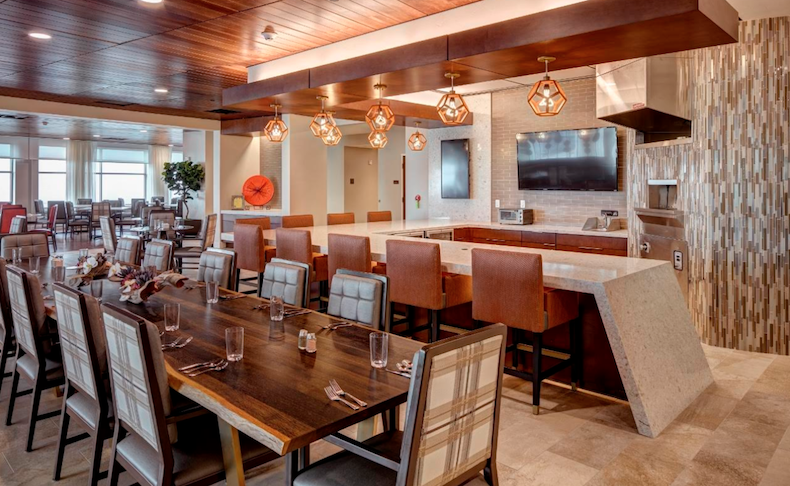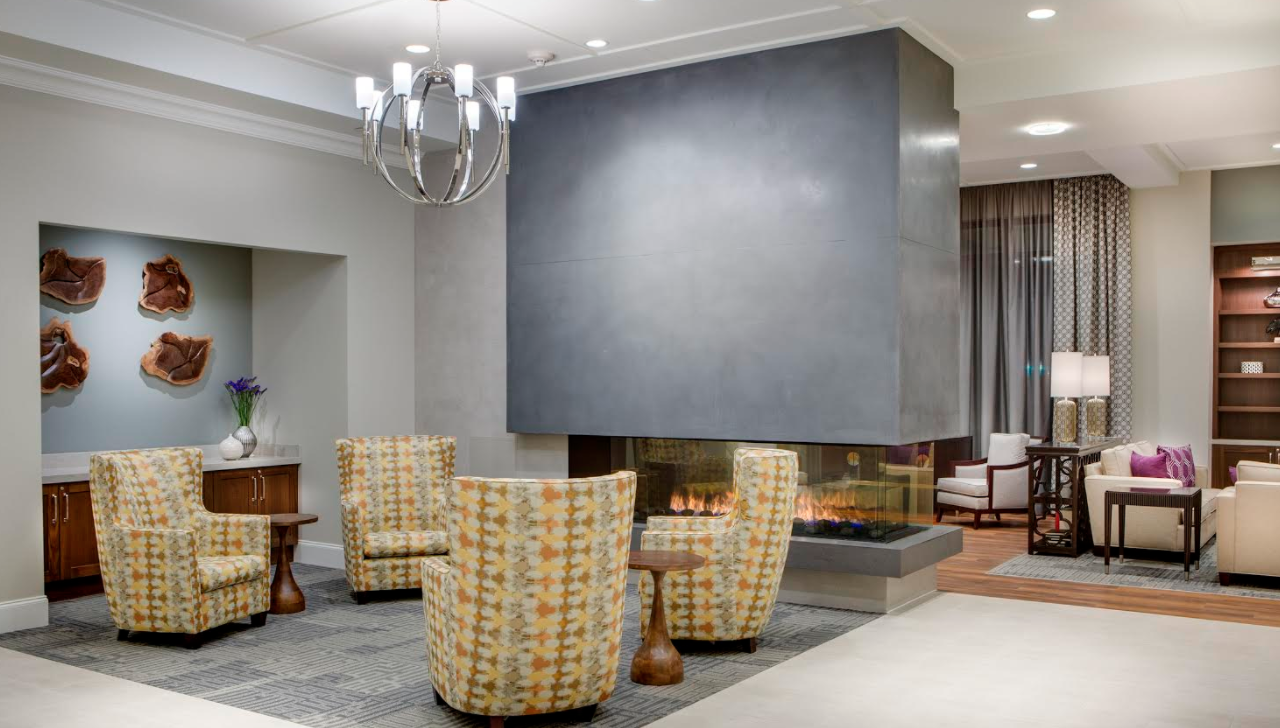A trend is defined as a state of fashion or the general direction in which something is developing or changing. At studioSIX5, an interior design firm focused on senior living facilities, designers are helping senior living communities stay fashionable and ahead of the game, taking the lead as the change agents of the senior living industry.
As 2018 kicks off, the studioSIX5 team has forecasted the following trends for the senior living market:
• Designing boutique and upscale communities for seniors and their baby boomer family members has been at the forefront of design considerations. But employee retention has become a new focus. Senior living communities are looking at ways they can cater to their employees’ needs in ways which result in increased efficiency and job satisfaction. Not only do operators want employees to feel comfortable while doing their job, they want them to feel valued as team members providing valuable care to residents.
• While integrated technology is now a norm, studioSIX5 anticipates that 2018 will bring about a heavier focus on building scalable technological capabilities into community infrastructures.
• The boom of building more urban communities in 2017 is creating a push to integrate senior living communities into master-planned communities, where amenities like salons, dining areas, and fitness centers are public-facing to encourage increased socialization with the community at large.• Designers are encouraging providers to include accent pieces and décor with local flavor, creating a sense of history and pride of place within a space. Mass-produced items have less character and feel less personal.
 LED lighting is being incorporated beyond just saving energy and is being used more and more to promote healthy sleep patterns and reduce anxiety by aligning lamp color temperature with residents’ circadian rhythms. Photo: studioSIX5
LED lighting is being incorporated beyond just saving energy and is being used more and more to promote healthy sleep patterns and reduce anxiety by aligning lamp color temperature with residents’ circadian rhythms. Photo: studioSIX5
• Consumer demand is causing manufacturers to embrace senior living requirements when designing products, materials, and furnishings. This rise in availability and variety will bring about more aesthetically-pleasing, functional products and furnishings for senior living.
• The use of less restrictive cooking technologies such as hoodless cooking, sous vide, and induction ranges will expand farm-to-table offerings and menu offerings to higher levels of care.
• Spaces with multiple uses and flexibility are still popular, but instead of having an area deemed as the “multipurpose room,” providers are looking at amenities that they can combine to serve a variety of purposes. For example, instead of having both a library and a coffee shop, they are combining the two.
• LED lighting is being incorporated beyond just saving energy and is being used more and more to promote healthy sleep patterns and reduce anxiety by aligning lamp color temperature with residents’ circadian rhythms.
• Luxe environments are moving beyond an understated elegance toward designs featuring jewel tones, mixed metals, and lush fabrics, allowing designers to create opulent custom pieces tailored to meet the needs of seniors.
• Senior living operators are creating opportunities for purposeful engagement in programming and operations, rather than simply providing activities. This encourages residents to participate in actual daily activities like meal prep, laundry, and gardening. The three zones of socialization will be used to create spaces which promote integration for each resident’s choice of socialization.
 Designers are encouraging providers to include accent pieces and décor with local flavor, creating a sense of history and pride of place within a space. Mass-produced items have less character and feel less personal. Photo: studioSIX5
Designers are encouraging providers to include accent pieces and décor with local flavor, creating a sense of history and pride of place within a space. Mass-produced items have less character and feel less personal. Photo: studioSIX5
Related Stories
| Jan 2, 2015
Construction put in place enjoyed healthy gains in 2014
Construction consultant FMI foresees—with some caveats—continuing growth in the office, lodging, and manufacturing sectors. But funding uncertainties raise red flags in education and healthcare.
| Dec 28, 2014
AIA course: Enhancing interior comfort while improving overall building efficacy
Providing more comfortable conditions to building occupants has become a top priority in today’s interior designs. This course is worth 1.0 AIA LU/HSW.
| Nov 18, 2014
New tool helps developers, contractors identify geographic risk for construction
The new interactive tool from Aon Risk Solutions provides real-time updates pertaining to the risk climate of municipalities across the U.S.
| Oct 21, 2014
Perkins Eastman white paper explores state of the senior living industry in the Carolinas
Among the experts interviewed for the white paper, there was a general consensus that the model for continuing-care retirement communities is changing, driven by both the changing consumers and more prevalent global interest on the effects of aging.
| Oct 16, 2014
Perkins+Will white paper examines alternatives to flame retardant building materials
The white paper includes a list of 193 flame retardants, including 29 discovered in building and household products, 50 found in the indoor environment, and 33 in human blood, milk, and tissues.
| Oct 15, 2014
Harvard launches ‘design-centric’ center for green buildings and cities
The impetus behind Harvard's Center for Green Buildings and Cities is what the design school’s dean, Mohsen Mostafavi, describes as a “rapidly urbanizing global economy,” in which cities are building new structures “on a massive scale.”
| Oct 12, 2014
AIA 2030 commitment: Five years on, are we any closer to net-zero?
This year marks the fifth anniversary of the American Institute of Architects’ effort to have architecture firms voluntarily pledge net-zero energy design for all their buildings by 2030.
| Sep 24, 2014
Architecture billings see continued strength, led by institutional sector
On the heels of recording its strongest pace of growth since 2007, there continues to be an increasing level of demand for design services signaled in the latest Architecture Billings Index.
| Sep 22, 2014
4 keys to effective post-occupancy evaluations
Perkins+Will's Janice Barnes covers the four steps that designers should take to create POEs that provide design direction and measure design effectiveness.
| Sep 22, 2014
Sound selections: 12 great choices for ceilings and acoustical walls
From metal mesh panels to concealed-suspension ceilings, here's our roundup of the latest acoustical ceiling and wall products.















